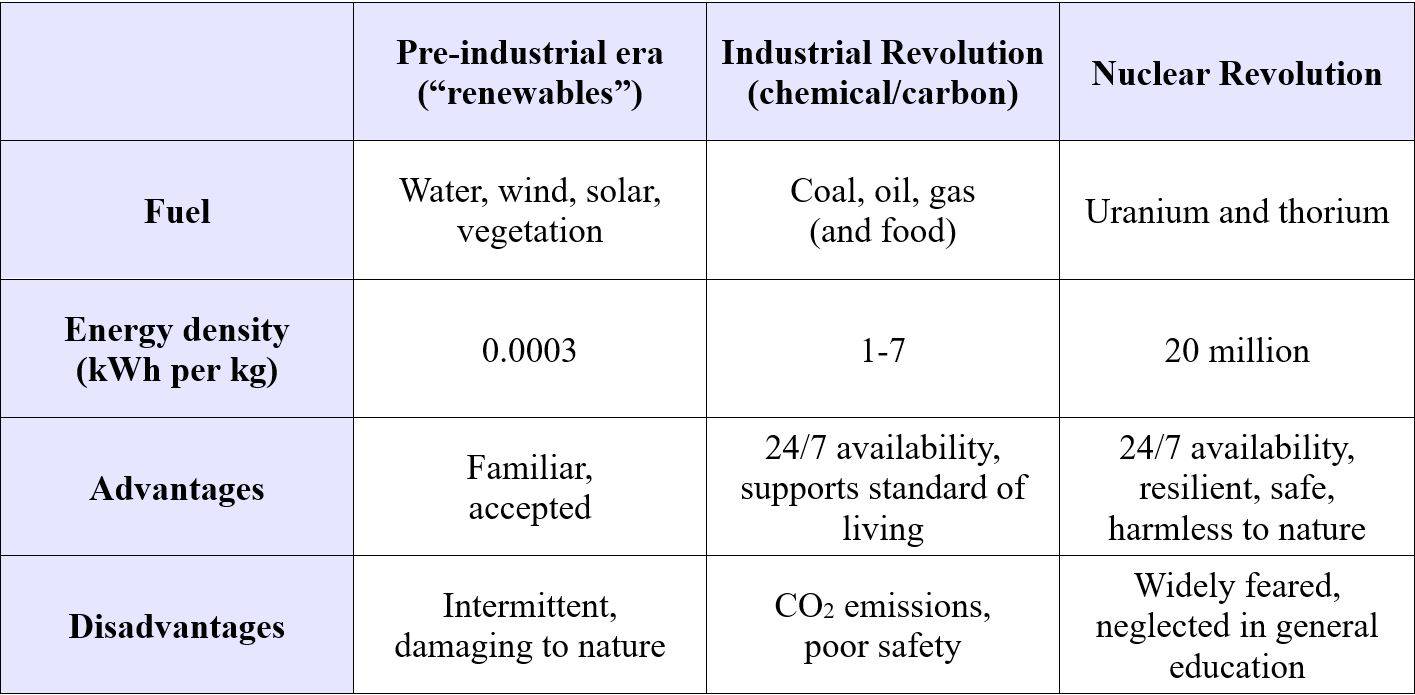Demonstrators around the world are demanding that carbon-based energy supplies be curtailed for the sake of the environment. Yet, in Germany, the Energiewende (energy transformation) policy that was supposed to meet those demands is failing to reduce carbon dioxide emissions. A big part of the problem is that, in response to long-standing anti-nuclear sentiment, policymakers aim to phase out nuclear energy, while investing in renewables like wind and solar.
By learning to harness the power of wind, water, and fire (burning leaves and wood) – basically, what we call "renewables" today – our early ancestors gained mastery over nature. But their energy sources were weak, available only when the weather permitted. As a result, their living standards were low, their lives were short, and their number remained small.
That all changed with the arrival of the Industrial Revolution. Humans learned to power engines by burning coal and, later, oil and gas. A measure of the utility of a fuel is its energy density – that is, the number of electricity units (kWh) in a kilogram (2.2 pounds). Fossil fuels have an energy density of 1-7 kWh per kg – a thousand times more than renewables – which can be harnessed anywhere at any time, regardless of the weather.
Advertisement
Access to these powerful energy sources has shaped most economic and political developments over the last 250 years. In that time, the world population has increased eightfold, life expectancy has doubled, and people's standards of living have improved dramatically.
Today, however, we stand at the threshold of a new energy revolution. The benefits of fossil fuels no longer outweigh the costs, and standard renewables remain as weak and unreliable as before the Industrial Revolution.

To harness sufficient energy, pre-industrial fuels need huge, nature-despoiling – hardly "green" or "environmentally friendly" – power stations: massive arrays of solar panels, forests of gigantic windmills, and vast flooded river valleys. Their size attests to the weakness of the energy that they collect, while intermittency implies a typical working availability of only 30%. And, as Germany's Energiewende policy has demonstrated, these fuels are not enough.
The world will not get the energy revolution it needs without realistic, scientifically sound energy policies. The natural science of energy has been well understood for a century, so surprises are rare. And the only other widely available fuel known to science is nuclear, which provides plentiful energy on demand, while doing the least harm to nature.
To function as an energy source, a fuel has to be "charged up" by a more powerful source – whether recent sunshine for solar or, in the case of fossil fuels, millions of years of photosynthesis. And the same physics that explains why the energy density of fossil fuels is 1,000 times that of pre-industrials also explains why the energy density of nuclear is five million times greater.
Advertisement
The uranium and thorium fuel that we find on Earth today was energized when it was created in a gravitational collapse event before the planet was formed. Astronomers observe such explosions happening elsewhere in the universe today.
One kilogram of the nuclear fuel that this phenomenon produces is enough to provide all the energy a person needs for a full life – and it requires neither the emission of 1,800 tons of CO2 nor the release of ten million tons of water by a dam. The waste from this minute quantity of nuclear fuel is equally small and, contrary to popular belief, causes no accidents.
Apart from the solitary decay of radioactive atoms, nuclear energy is firmly locked inside individual nuclei, which never meet one another except at the center of the sun. Nuclei do not release their energy prematurely, because only a free neutron can override the lock, and such keys decay quickly: their half-life is ten minutes. As a result, nuclear energy can be released only inside a working reactor. Such is the exceptional physical safety of nuclear energy.
Discuss in our Forums
See what other readers are saying about this article!
Click here to read & post comments.
42 posts so far.